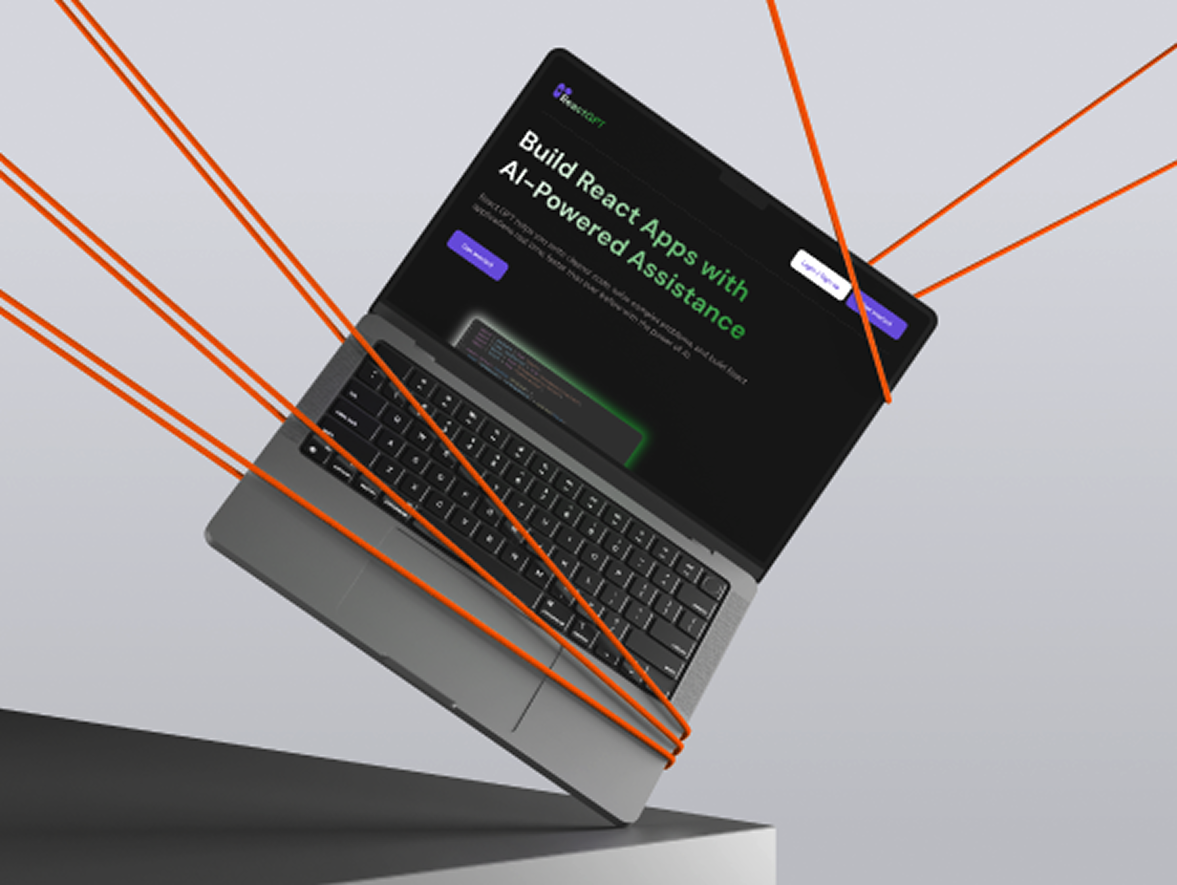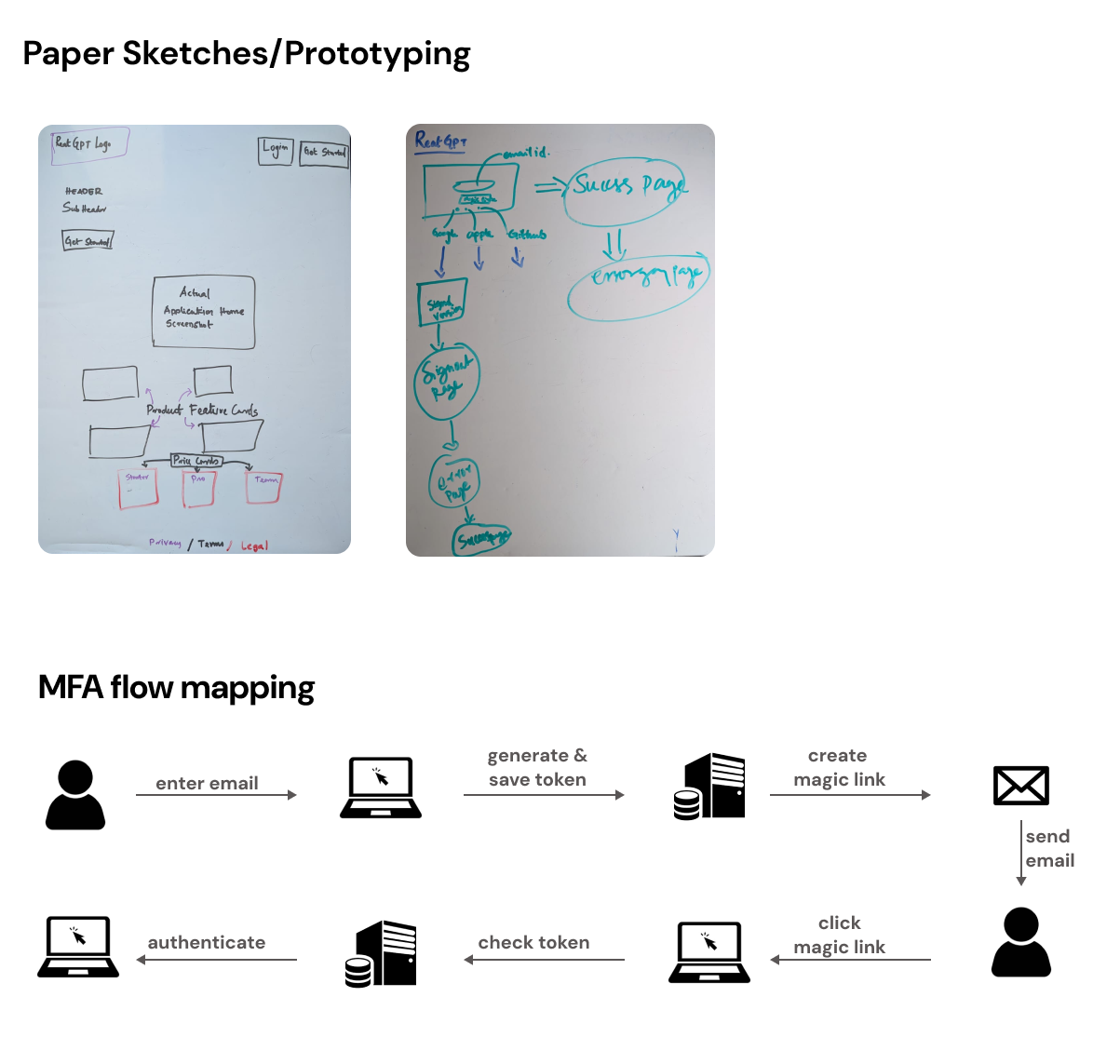ReactGPT.ai
ReactGPT.ai is an engineering-focused solution for front-end engineers to boost their coding workflow with specialised React AI. As a design consultant, I work with stakeholders, including project leaders and engineers, remotely across Australia. This project is currently a work in progress, and I intend to update this portfolio entry as I progress with my deliverables.

Problem & Opportunity
Through extensive desk research and interviews with front-end developers, we discovered that React developers spend an average of 30% of their time debugging issues, writing repetitive boilerplate code, and searching for optimal implementation patterns. Despite the wide availability of general coding assistants, there was no AI solution specifically tailored to React's unique patterns and best practices while coding through the projects.
After conducting several user interviews with developers across various experience levels, we identified a significant opportunity to create a more specialised AI assistant that understands React-specific concepts.
Research Findings
Working with a cross-functional team of UX researchers and React experts, I conducted contextual inquiries, stakeholder interviews, design workshops and competitive analysis to understand how developers currently interact with coding assistants.
Key findings included:
- Existing AI coding tools often provide generic JavaScript solutions that don't align with React best practices or complex concepts within React.
- Junior developers spend 4+ hours per week searching for React patterns they could simply "ask for" and get mentored.
- Senior developers needed assistance with performance optimisation and keeping up with React's evolving ecosystem.
- All developers struggled with context switching between coding and searching for solutions.
We picked a compelling insight that emerged when observing developers in their natural workflow: "I know what component I want to build, but I waste time rewriting the same patterns over and over. I wish I could just describe what I need and get a React-optimised solution."

MVP Strategy
With the engineering team focusing on AI model feasibility, my immediate responsibility was to create a landing page that would validate our concept and generate early user interest. To determine the most effective approach, I facilitated a prioritization workshop with key stakeholders.
During this collaborative session, we used an impact/effort matrix to evaluate potential landing page features and content. This framework helped us identify high-impact, lower-effort elements that would:
- Clearly communicate ReactGPT's unique value proposition
- Demonstrate understanding of React developers' specific pain points
- Generate early interest and collect valuable feedback
- Inform the broader product development strategy
The impact/effort exercise revealed that showcasing realistic AI interactions with React-specific code examples would have the highest impact on potential users, while requiring moderate implementation effort.

Landing Page Design Process
With priorities established, I began designing the landing page to serve as both a product introduction and validation tool. My process included:
Information Architecture
I developed a content hierarchy that addressed the key questions developers would have:
- What specific React problems does this solve?
- How is this different from generic coding assistants?
- What does the interaction with the AI look like?
- How will it integrate with existing workflows?
Wireframing and Prototyping
I created low-fidelity wireframes focusing on communicating the core value proposition before moving to interactive prototypes. This allowed me to quickly iterate and test messaging with stakeholders.
The prototypes included:
- "Try it now" interactive demos showing React-specific AI assistance
- Visual comparisons between generic AI solutions and ReactGPT
- Clear illustrations of workflow integration possibilities
- A feedback collection mechanism
Visual Design
For the final designs, I developed a visual language that would resonate with React developers, balancing professional credibility with innovative AI capabilities:
Key design decisions included:
- Designing interactive elements that mimic IDE interactions
- Implementing a color palette and typography optimized for code readability
- A design system that allows for easy updates as the product evolves
User Feedback Strategy
A critical aspect of the landing page was designing an effective feedback collection system. I created several touchpoints for user input:
- Feature prioritization survey: Allowing developers to rank which capabilities would be most valuable
- Early access sign-up with detailed questionnaire about workflow pain points
- Analytics implementation to track engagement with different value propositions
Current Status & Early Results
The landing page was launched in controlled environment to validate our concept while engineering work continues on the AI model. Early analytics and feedback have been promising:
- High conversion rate on early access sign-ups (15%)
- Valuable qualitative feedback identifying specific React patterns developers most want help with
- Clear validation of our core hypothesis about React-specific AI assistance being more valuable than generic solutions
Next Steps
As the sole product designer on this project, my focus is now on:
- Analyzing landing page feedback to refine our understanding of user needs
- Creating design specifications for the core product based on validated assumptions
- Developing a more detailed user journey map incorporating realistic AI interactions
- Collaborating with the engineering team to align design vision with technical capabilities
- Planning comprehensive usability testing for the initial product release
The landing page has served as both a design deliverable and a strategic research tool, helping us build a foundation of user insights while the technical implementation progresses.
Lessons Learned
This project has already taught me valuable lessons about designing at the intersection of developer tools and AI:
- The importance of domain-specific language and examples in establishing credibility
- How to create effective validation tools when the core technology is still in development
- Techniques for balancing aspirational product visions with realistic near-term capabilities
- Strategies for maintaining user-centered design when working with cutting-edge technology
I look forward to updating this case study as we move from concept validation to full product implementation.